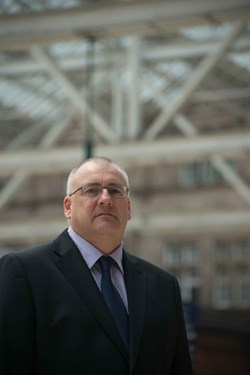There are several markets for the Sleepers, depending on your destination.
“In the traditional split of business and leisure, it’s actually about half and half. Business is slightly stronger in Glasgow and Edinburgh, as it is to Fort William and Inverness. We’re seeing quite a strong business growth in the Inverness market, reflected (I think) with Inverness growing as the Highland capital.
“But journey purpose is incredibly diverse, all the way through from weekly commuting. We get a lot of that. We get a lot of the leisure people do it for the weekend away - so down on the Friday, back on the Sunday night.”
As for which direction is busier (north-south or south-north), Strachan says it depends on the time of year.
“You get the type of flow peaks you would expect. For example, on May 22 before the Spring Bank Holiday, I could probably sell four trains on each of them. The demand is high. But again, things like Maundy Thursday and then all the long-distance services, you’ll find Sunday nights are always busy.”
The Caledonian Sleeper does seem to be focused on north of the border a lot of the time. Strachan, himself a Scot, acknowledges that can appear to be the case: “I think even though we want to create an essentially Scottish business, and it’s a Scottish government-sponsored contract, we forget London and the South East.”
He admits that it has “probably been the case” that London is seen merely as a starting point for the trains, and no more. “We want to ensure that with the Caledonian Sleeper, it is Scottish but that London is part of it. Alan Moore, who’s our uniform designer, really did that. When he designed our new tartan, because we have a Caledonian Sleeper registered tartan for the new uniform and interior design, Alan brought colours into it that were representative of the St George’s Cross. We’ve got red and white with it. We recognised that we didn’t want to push the thing to be so Scottish that it wasn’t appealing to London and the South East.
“As a Scot I’m furiously proud and loyal, but not to the extent that we should be blinkered about the communities that we serve in the South.”
Another change could be the use of lounges (which will continue), and the possibility of early boarding. More sittings for food could also be possible.
“We are trying to get early board. It’s great to have the lounge there, but I would like if we can on Highland to be out on the platform and to have doors open by about 1930.
“That’s ambitious, given what else is going on at Euston at that time of night, but it means we can welcome people on board, they can get settled in, and they can get into the lounge car.
“The problem currently with the lounge car, particularly on the Highland, is that everybody wants to eat as soon as they’re on. So we’re platformed and open at around 2030 at the moment, and everybody wants to eat. By bringing that an hour earlier, we could effectively have a couple of sittings. And part of the moving of the website and the app of the virtual concierge allows First Class guests to reserve a table in the lounge.”
There are also issues surrounding Euston, which is set for redevelopment for its role as HS2’s terminus. This means that other termini are being investigated.
“We’re looking at options,” says Strachan. “The option I like best is get into King’s Cross/St Pancras. We know King’s Cross cannot currently accommodate 16 carriages, but we know St Pancras can. I would like to go to the international platforms, but I would not like to go to the international check-in and immigration!”
There’s also the benefit that whereas King’s Cross would need to be extended to fit the CS trains, St Pancras would not: “You can accommodate a 16-car train. What we would have to make sure was that we can find a route, a way out from there.”
The big headline from the new deal was the rolling stock and traction - rebuilt Class 73/9s and overhauled GB Railfreight Class 92s supplied in a 15-year deal worth £100 million. This replaces the current DB Schenker offering of Class 90s on the West Coast Main Line and Class 67s north of the Central Belt.
Strachan explains: “GBRf has a reputation as an innovative, can-do organisation. I think that’s about leadership, and John is well-known and well understood in the industry for getting it done, which in a business like ours is exactly what we needed.
















Login to comment
Comments
No comments have been made yet.